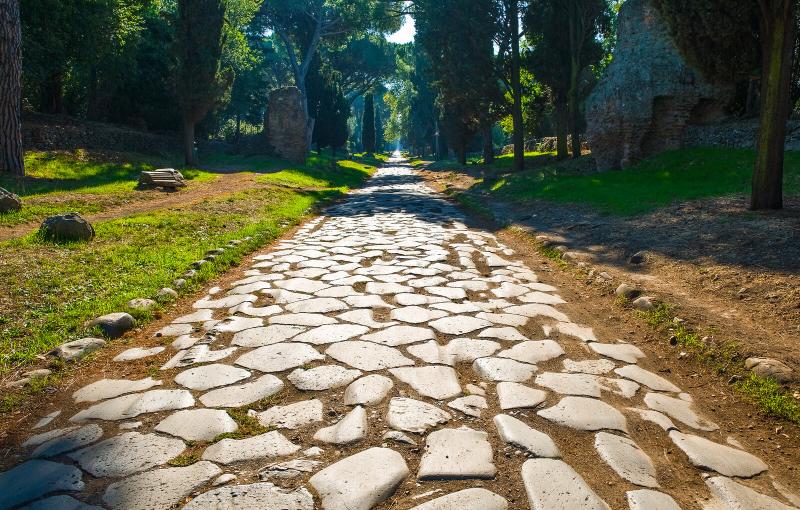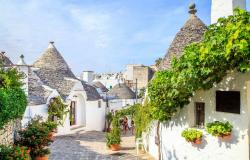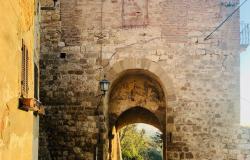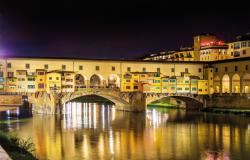Italy’s Roman Roads
ITA:

Use player to listen to Italian version
Romans were great road builders – they built mostly linear roads in order to minimize distances for military, political and trade reasons.
Roads that are as old as 2000 years still exist in Italy today. One such example is the Via Emilia, which connects Piacenza to Rimini in Emilia-Romagna, and celebrated just last year 2200 years since its foundation.
At the height of the Roman Empire, the Roman road network covered 400,000 kilometers (80,000 of which were paved), with 29 roads departing from Rome to connect to the rest of Italy (hence the expression ‘all roads lead to Rome’) and many others that covered all areas of the empire, from Britain to Mesopotamia.
The streets were equipped with milestones, which indicated the distance in miles from the ‘golden milestone’, located in the Roman Forum, at the foot of the Capitol.
Here are five major Roman roads that still survive today.
Via Appia – The Appian Way connected Rome with Brindisi (Brundisium) in southern Italy. Built between the late 4th and early 3rd century, it was nicknamed ‘regina viarum’ (queen of roads) and was considered one of the greatest engineering works of the ancient world for the huge economic, military and cultural impact it had on Roman society. Brindisi was at the time one of the most important ports in Italy, the connection to the trade routes for Greece and the East. Large stretches of the road, especially in the suburbs of Rome, are well preserved.
Via Salaria - The Via Salaria was a consular road that went from Rome to Porto d'Ascoli on the Adriatic Sea; today, it is classified as ‘strada statale’ (state road) SS 4. Unlike all other consular roads, which took their name from the person responsible for their construction, the name Salaria derives from the function for which it was built: the transportation of salt.
Via Emilia - The Via Aemilia ran from Ariminum (Rimini) on the Adriatic coast, to Placentia (Piacenza) on the river Padus (Po). It was completed in 187 BC. At Rimini, it connected with the Via Flaminia to Rome, which had been completed 33 years earlier. It was named after the Roman consul Marcus Aemilius Lepidus and passed through the major cities of the region, Forlì, Faenza, Bologna, Modena, Reggio and Parma, as it still does today: it is state road 9, still called Via Emilia, and follows the Roman route over much of its length. The road's first bridge still exists, just outside Rimini.
Via Aurelia – The Via Aurelia was a consular road built in the mid-3rd century BC to connect Rome to Cerveteri, and later prolonged to reach the military colonies of Cosa and Pyrgi on the Tyrrhenian coast. Today, it connects Rome to France along the Tyrrhenian Sea and the Ligurian Sea.
Via Cassia - The Via Cassia was an important consular road that connected Rome to Florentia (Florence), later extended to connect with Via Aurelia via Lucca and Pistoia.
I romani erano grandi costruttori di strade: costruivano strade prevalentemente lineari per ridurre al minimo le distanze, per ragioni militari, politiche e commerciali.
Strade di 2000 anni esistono ancora oggi in Italia. Un esempio è la Via Emilia, che collega Piacenza a Rimini in Emilia-Romagna, che ha celebrato proprio lo scorso anno i 2200 anni dalla sua fondazione.
All'apice dell'impero, la rete stradale romana copriva 400.000 chilometri (di cui 80.000 asfaltati), con 29 strade che partivano da Roma per collegarsi al resto dell'Italia (da qui l'espressione "tutte le strade portano a Roma") e molte altre che coprivano tutte le aree dell'impero, dalla Gran Bretagna alla Mesopotamia.
Le strade erano dotate di pietre miliari, che indicavano la distanza in miglia dal ‘miliario aureo’, situato nel Foro Romano, ai piedi del Campidoglio.
Ecco cinque delle principali strade romane che sopravvivono ancora oggi.
Via Appia - La Via Appia collegava Roma con Brindisi (Brundisium) nel sud Italia. Costruita tra la fine del 4° e l'inizio del 3° secolo, fu soprannominata ‘regina viarum’ (regina di tutte le strade) ed è considerata una delle più grandi opere di ingegneria del mondo antico per l'enorme impatto economico, militare e culturale che ha avuto sulla società romana. Brindisi era all'epoca uno dei porti più importanti d'Italia, il collegamento con le rotte commerciali per la Grecia e l'Oriente. Larghi tratti di strada, specialmente alla periferia di Roma, sono ben conservati.
Via Salaria - La Via Salaria era una strada consolare che andava da Roma a Porto d'Ascoli sul Mare Adriatico; oggi è classificata come ‘strada statale’ SS 4. A differenza di tutte le altre strade consolari, che hanno preso il nome dal responsabile della loro costruzione, il nome Salaria deriva dalla funzione per la quale fu costruita: il trasporto del sale.
Via Emilia - La Via Emilia va da Ariminum (Rimini) sulla costa adriatica, a Placentia (Piacenza) sul fiume Padus (Po). Fu completata nel 187 aC. A Rimini, si collegava con la Via Flaminia, completata 33 anni prima, che conduceva a Roma. Prende il nome dal console romano Marco Emilio Lepido e passava attraverso le principali città della regione, Forlì, Faenza, Bologna, Modena, Reggio e Parma, come fa oggi: è la strada statale 9, ancora chiamata Via Emilia, e segue la vecchia strada romana per gran parte della sua lunghezza. Il primo ponte costruito sulla Via Emilia esiste ancora, appena fuori Rimini.
Via Aurelia - La Via Aurelia era una strada consolare costruita a metà del III secolo aC per collegare Roma a Cerveteri, e in seguito prolungata per raggiungere le colonie militari di Cosa e Pyrgi sulla costa tirrenica. Oggi collega Roma alla Francia lungo il Mar Tirreno e il Mar Ligure.
Via Cassia - La Via Cassia era un'importante via consolare che collegava Roma a Florentia (Firenze), in seguito estesa per collegarsi alla Via Aurelia passando per Lucca e Pistoia.











